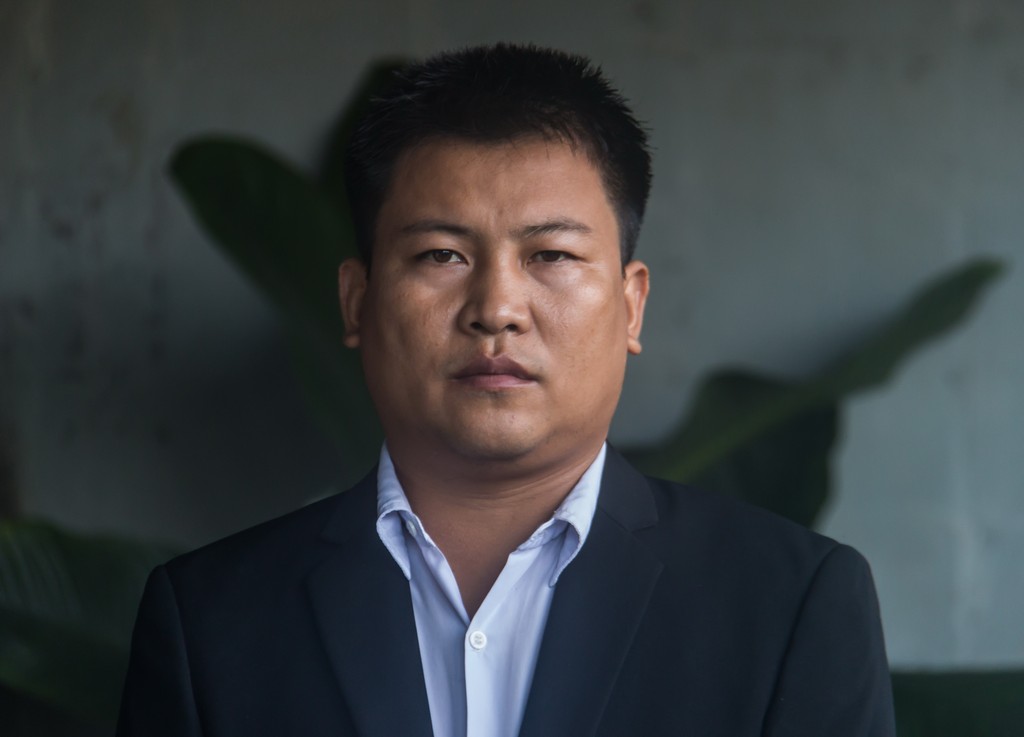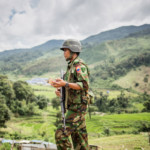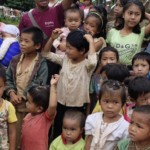Burma Link | November 30, 2016
Since the NLD-led Government’s coming to power, conflicts in Burma’s ethnic areas have intensified and widespread attacks against civilian populations have been documented by various civil society and human rights organisations. EAOs (Ethnic Armed Organisations) in the north have been on defence against intensified Burma Army attacks for months whilst the Government and Daw Aung San Suu Kyi have remained painfully silent, despite numerous appeals by the civil society for her to speak out. On November 20th, the Northern Alliance, comprising of the Kachin Independence Organisation/Army (KIO/KIA), Palaung State Liberation Front/Ta’ang National Liberation Army (PSLF/TNLA), Arakan Army (AA), and Myanmar National Democratic Alliance Army (MNDAA), launched a joint offensive against the Burma Army in northern Shan State, as a response to being continuously attacked by Government forces. After a long silence on Burma Army’s atrocities, suddenly Daw Suu Kyi was quick to respond, calling the EAOs to take sign the very agreement they have been excluded from (‘Nationwide’ Ceasefire Agreement). Tar Parn La, Head of Foreign Department of the PSLF/TNLA, commented to Burma Link about the reasons for the offensive, what measure the alliance is taking to protect civilians, and how they view Daw Suu Kyi’s seeming siding with the military.
Q: What are the reasons for launching the joint offensive in northern Shan State? Why now?
(2) In Kachin State, shortly after the 21st Century Panglong conference, the army continued to make massive assault offensives, which have continued for the past three months. In the same way, the Burma Army celebrates its offensives in Rakhine State and the Kokang region. In these areas, the military assaults towards civilians are also continuing, although Burma’s military government does not take responsibility for them. Philanthropic activists and human rights groups don’t really care about the civilians who are attacked or killed there.
So, as our four groups see that the Burma peace process is on the wrong road, we have awakened to the right direction of having intense support and help [for each other]. Decreases in offensive measures can be tailored to achieve a nationwide ceasefire and potentially peace; we ourselves should collaborate after agreements, and we are now seeing in the Northern Alliance the implementation of joint operations. Even now after this, we are ready to implement civil peace with the Government, but the Burma Army and Government don’t accept it. The Government’s silence in this period of time almost promotes the Burma Army’s offenses. Right now, if we cooperate for civil peace, we’ll be on the right path, which is what we believe we’re doing.
Q: What are the main objectives of the joint offensive?
The first aim is that the Burma Army has to stop their offensive in our region, and their units retreat. The main aim is that all of the Burma Army return to their motherland.
The second aim is to correct the direction of the Burma Army and Government’s internal peace road from the wrong direction, and then intensely support it.
Especially the Burma Army and Government, who led the nationwide ceasefire, are not accepting and doing it. All of the EAO groups were not accepted to participate in the civil peace process event, the Union Peace Conference, which has now been held twice. Every EAO has not participated; changes are urgently needed. These are meant to be changed.
Q: Can you describe the current conflict situation?
On November 20, our alliance started fighting in Muse Township, Mong Ko strategic base, Phaung Sai camp, Kyu Gote-Pangsai camp, 105-Mile security base, and other security bases, reinforcing the road and multiple camps, and Kut Kai strategy camps.
When that fighting happened, the Chinese border transportation from Lashio to Kunlong and Lashio to Muse borders was temporarily closed, as the road from Lashio to Muse as well as whole northern Shan State was not safe to use for travel. We also issued statements on the 21st to people with no safe way to northern Shan State and requested for them not to travel. All parts of the upper field have become battlefields, and people there are encountering difficulties with their lives and transportation. Now, there are more than ten thousand people have moved to a safe place.
From 20 to 28 [of November], the total battle times between the Burma Army and alliance have been: 20th – 15 times, 21st – 8 times, 22nd – 10 times, 23rd – 14 times, 24th – 11 times, 25th – 8 times, 26th – 6 times, 27th – 8 times, 28th – 8 times. A total of no less than 88 times between the 20 and 28th, clashes erupted as the Burma Army continued its offensive and fierce fighting continued.
Q: How has the offensive affected civilians? What procedures are you taking to protect civilians?
On [November] 20, at the Mong Ko strategies camp when they [Burma Army] attacked, it happened with intensive military combat. The Army attacked with Air Force assistance, the airstrike killing one couple and wounding 5 civilians. In the beginning, around the Muse 105 Mile community and Mong Ko, Pang Sai more than 5,000 people have been moved to a safe place.
On the days of the 25 and 26, during the fighting the Burma military burned many civilians’ houses in Mong Koe. Other attacks have caused civilians’ deaths, we have heard. But it is very difficult to determine where a bullet is from and who it belonged to. We are able to help observers to know of the civilians’ difficulties.
Their impact on the civilian people, as we announced on the 21st, to avoid the issue of an escalation of fighting in northern Shan, is that civilians in the areas of ongoing fighting should not travel. We ask them to please be aware of these constraints.
Q: How are the relations between the Northern Alliance and the UWSA?
There are no [special] relations with the Northern Alliance, but UWSA may has a relationship with each organization. According history, PSLF/TNLA and UWSP/UWSA together with Wa people are a neighbour ‘blood brother’ organization and nationality; we have built friendly relations with them.
Q: How are the relations between the Northern Alliance and other EAOs?
Northern Alliance is not a new EAO alliance, because we all are membership of UNFC council. Current conditions have required us to cooperate militarily in aggressive offensives to resist the Burma Army through the alliance’s cooperation.
Q: How can Burma achieve genuine and lasting peace?
To build sustainable peace, to be an inclusive organisation, we must invite all the organisations and be open, concerned, and involved. We would not be able to get a good result solving problems with fighting; for more than half a century of history, a military solution has proven unsuccessful. Meeting these criteria can be achieved only through negotiations. Burma’s continuous military offensives in ethnic regions will not achieve sustainable peace. ‘Stop offensives and attacks from the military, and have consultations to get a sustainable peace.’
Q: Your message to the EAO leaders / people of Burma / international community?
Fighting happens with military operations as required by the crisis, because it is our local need.
In many places throughout our region, there is fighting with Burma Army offensives, so our four groups together announced that we will defend ourselves.
On November 21 in northern Shan, civilians were requested to avoid traveling; now again, we must request they do not travel, as additional northern Shan areas have become battlefields, so public travel is not secure.
To the people in Burma and the international community: The Burma Army must withdraw from the EAO areas and return to their motherland. We encourage and appeal for genuine sustainable peace.
Q: How do you feel about Daw Aung San Suu Kyi breaking her silence over the conflict situation with her statement on November 23rd, urging ethnic armed groups to join the peace process and sign the NCA?
With her statement on the 23rd, the State Counsellor encouraged the Burma Army, who have long committed human rights abuses and killed ethnic people. This was very sad. ‘Invited to join peace process and to sign NCA’ is far from the real situation. Despite what the statement says, in reality it is limited, does not include any implementation, and would be only words spoken.
Because especially we AA, MNDAA, PSLF/TNLA organisations are willing to participate in the peace process, at NCA negotiations ([ 9 Points) UNFC (United Nationalities Federal Council) adaptably wished to participate, but the Burma Army and Government had given those three groups limited participation and no right to see [take part in the conference].
We northern allies would attempt to participate in the peace process in the country, but the Burma military’s brutal offensives and daily pressure on us [continues]. The statement is inconsistent with current conditions and national policy. The implementation of the Burma Army’s policy cannot achieve a civil peace process. The NLD is sacrificing itself, and its historic image will be damaged.
Q: Anything else you would like to add?
We, especially AA, MNDAA, PSLF / TNLA groups, [want to be] included in the peace process and [feel] the need to build genuine and sustainable civil peace. However, the Government and the Burma Army have blocked our participation under pressure from the military offensives, by unnecessary military conflict in the ongoing cases. We want people to understand this.








[…] Source: https://www.burmalink.org/current-conditions-required-us-cooperate-militarily-aggressive-offensives-r… […]